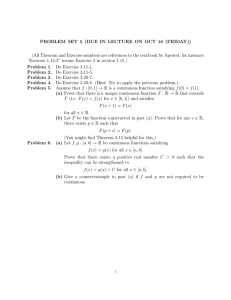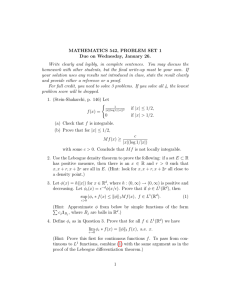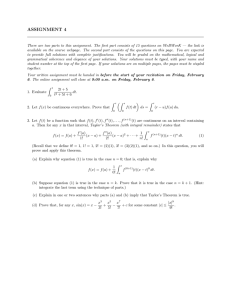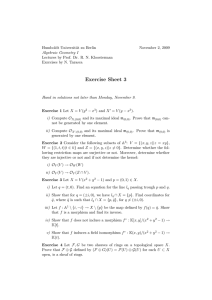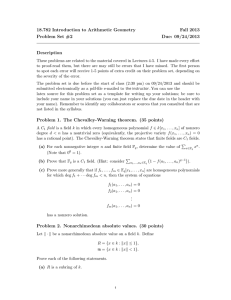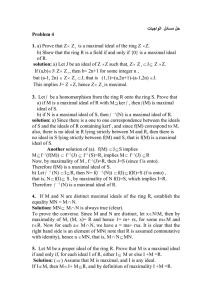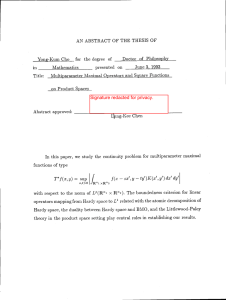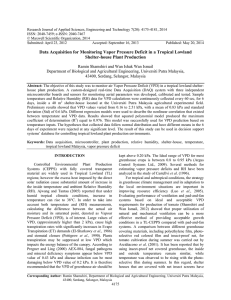MATHEMATICS 542, PROBLEM SET 1 Due on Friday, February 11.
advertisement
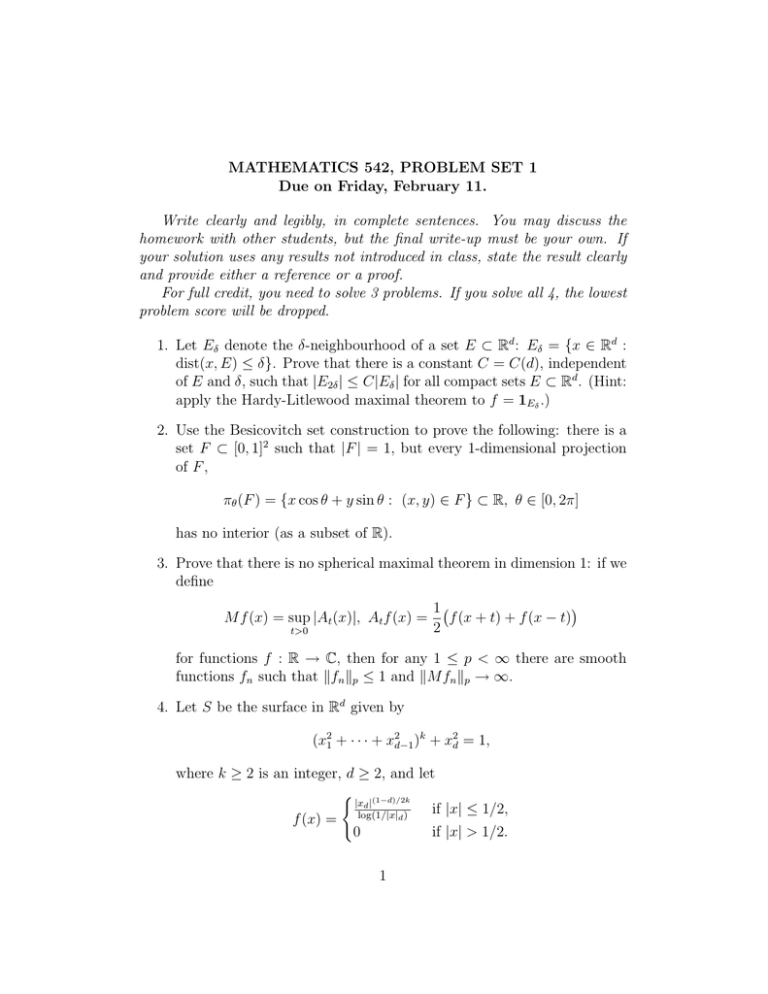
MATHEMATICS 542, PROBLEM SET 1
Due on Friday, February 11.
Write clearly and legibly, in complete sentences. You may discuss the
homework with other students, but the final write-up must be your own. If
your solution uses any results not introduced in class, state the result clearly
and provide either a reference or a proof.
For full credit, you need to solve 3 problems. If you solve all 4, the lowest
problem score will be dropped.
1. Let Eδ denote the δ-neighbourhood of a set E ⊂ Rd : Eδ = {x ∈ Rd :
dist(x, E) ≤ δ}. Prove that there is a constant C = C(d), independent
of E and δ, such that |E2δ | ≤ C|Eδ | for all compact sets E ⊂ Rd . (Hint:
apply the Hardy-Litlewood maximal theorem to f = 1Eδ .)
2. Use the Besicovitch set construction to prove the following: there is a
set F ⊂ [0, 1]2 such that |F | = 1, but every 1-dimensional projection
of F ,
πθ (F ) = {x cos θ + y sin θ : (x, y) ∈ F } ⊂ R, θ ∈ [0, 2π]
has no interior (as a subset of R).
3. Prove that there is no spherical maximal theorem in dimension 1: if we
define
M f (x) = sup |At (x)|, At f (x) =
t>0
1
f (x + t) + f (x − t)
2
for functions f : R → C, then for any 1 ≤ p < ∞ there are smooth
functions fn such that kfn kp ≤ 1 and kM fn kp → ∞.
4. Let S be the surface in Rd given by
(x21 + · · · + x2d−1 )k + x2d = 1,
where k ≥ 2 is an integer, d ≥ 2, and let
( (1−d)/2k
|xd |
if |x| ≤ 1/2,
f (x) = log(1/|x|d )
0
if |x| > 1/2.
1
Prove that f ∈ Lp (Rd ) if p ≤ 2k/(d − 1), but
Z
sup f (x − ty)dσ(y) = ∞
t>0
S
for a set of x of positive measure, where σ is the Lebesgue measure
on S normalized so that σ(S) = 1. (This shows that any analogue of
the spherical maximal theorem for surfaces with Gaussian curvature
vanishing at a point must have a smaller range of exponents.)
2

